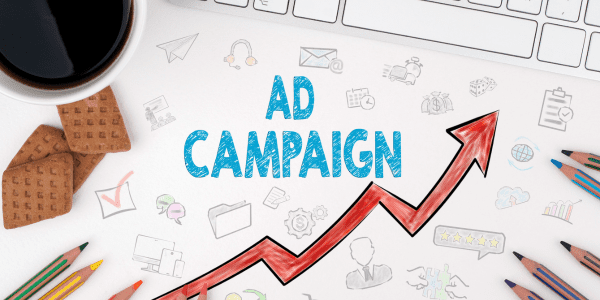Email marketing has the potential to be both effective and cost-efficient. As a strategy for Small and Medium-sized Businesses (SMBs), email marketing allows them to communicate with their audience, develop brand loyalty, and increase sales in today’s digital world.
Additionally, SMBs must utilize email marketing to personalize and segment their messages based on customer preferences, behaviors, and demographics. This targeted approach is crucial in enhancing the relevance of the content delivered to recipients, resulting in significantly higher engagement and conversion rates.
Moreover, Email marketing is an indispensable tool for SMBs to assess the efficacy of their campaigns. Businesses can gauge the effectiveness of their email marketing efforts by analyzing performance metrics like open rates, click-through rates, and conversion rates. These metrics serve as indicators to measure the impact of their initiatives. With this real-time feedback, SMBs can make informed decisions backed by data to optimize future campaigns. Consistently fine-tuning strategies based on audience demands ensures businesses remain relevant and responsive. Utilizing email marketing can be a powerful tool for small and medium-sized businesses to develop strong customer connections, promote brand expansion, and accomplish their objectives in an increasingly competitive online environment.
However, with numerous emails filling up inboxes daily, capturing customers’ attention and engaging with them can take time and effort.
To help SMBs elevate their email marketing techniques, we’ve designed a comprehensive guide that covers vital aspects such as building a substantial subscriber list, crafting captivating content, and tracking campaign performance.

Building a Strong Subscriber List
Consider using opt-in and double opt-in methods
To avoid adding inactive or uninterested subscribers to your email list, ensuring that they have explicitly consented to receive your emails is crucial. One way to do this is by implementing a double opt-in process that provides additional confirmation. It can help minimize the likelihood of acquiring subscribers who are not genuinely interested in your content.
Offer Perks
If you want to increase the number of sign-ups, offering exclusive content, discounts, or freebies to potential subscribers could be helpful. These incentives motivate users to join your email list and stay engaged with your brand.
Segmentation: Improve your chances of converting subscribers; try organizing your email list based on different criteria like demographics, behavior, and past interactions. It can help you effectively target your audience and boost engagement. This feature allows you to send personalized and relevant content to specific groups of recipients.
Optimize Sign-Up Forms: When creating sign-up forms, it’s important to keep them simple, user-friendly, and mobile-responsive. Only ask for essential information and avoid lengthy forms that could discourage potential subscribers.
Social Media Integration: One effective way to grow your email newsletter subscriber base is by leveraging your social media platforms. You can promote your newsletters on your social media accounts and encourage your followers to subscribe. Cross-promotion is a great strategy that can help you achieve significant growth.
Crafting Compelling Email Content
Personalization: When addressing subscribers, it’s essential to use their names and incorporate information from previous interactions to personalize the content of emails. It can lead to higher open rates and greater engagement.
Catchy Subject Lines: The subject line of your email is crucial as it creates the first impression. It should be captivating enough to motivate the recipients to open it. Avoid using spammy language and ensure that the content inside is explicit.
Engaging Content: Create valuable, engaging content that resonates with your audience. Offer helpful information, entertaining stories, and exclusive offers that add value to the reader’s experience.
Mobile Optimization: Ensure your emails are optimized for mobile viewing, with clear, concise formatting and a responsive design.
Call-To-Action (CTA): If you want to motivate your audience to do something specific, such as checking out your website, buying a product, or signing up for an event, there are specific tactics you can use. It is essential to include a clear and compelling call-to-action. You can make the CTA more noticeable using contrasting colors and persuasive language.
Variation Testing: To improve your email campaigns, try out various subject lines, content layouts, and calls-to-action (CTAs) using A/B testing. This method uses data to determine what resonates most with your audience, allowing you to optimize your future campaigns.
Compliance and Best Practices
Comply with GDPR and CAN-SPAM: Ensure legal compliance with your email marketing efforts, it’s essential to familiarize yourself with the General Data Protection Regulation (GDPR) and the Controlling the Assault of Non-Solicited Pornography And Marketing (CAN-SPAM) Act.
Unsubscribe Option: Provide an unsubscribe option that is easy to find and use in your emails. By respecting your subscribers’ preferences, you can build trust and reduce the risk of being marked as spam.
Email Frequency: When communicating with your subscribers via email, it’s essential to be mindful of the frequency of your messages. If you send too many, your subscribers may become overwhelmed and leading them to unsubscribe. The best approach is to strive for a balance that keeps your audience engaged without overwhelming them with too many messages.
Avoid Spam Triggers: Prevent your emails from being marked as spam; using trustworthy email marketing services is recommended. It’s best to avoid using too many capital letters, spammy words, or excessive punctuation in the subject line or content.
Consistent Branding: Maintaining a consistent brand identity in all email elements, such as logo, color scheme, and tone, is crucial. It helps to establish trust and familiarity with your subscribers.

Measuring Email Campaign Success
Key Performance Indicators (KPIs): Assess the effectiveness of your email marketing campaigns; it’s crucial to identify key performance indicators (KPIs) such as open rates, click-through rates (CTR), conversion rates, and unsubscribe rates. Analyzing these metrics lets you gain valuable insights into your campaigns’ performances.
Email Analytics Tools: Enhance your email campaign performance; you can use email analytics tools provided by your service provider. By utilizing these tools, you can acquire significant knowledge about user behavior. This information can aid in making informed decisions supported by data.
Conversion Tracking: Gauge the success of your email campaigns in encouraging desired actions like downloads, sign-ups, or purchases; it’s essential to implement conversion tracking.
Split Testing: Continuing to use A/B testing is advised to enhance the effectiveness of your email campaigns. By measuring the effects of any modifications or enhancements, you can optimize future campaigns for better results.
Email List Health: It is essential to regularly check the status of your subscriber list to ensure its health. You can keep your audience healthy and engaged by eliminating inactive or disengaged subscribers.

Email marketing is a highly effective approach for small and medium-sized businesses to connect with their target audience and promote business expansion. Following the practices outlined in this guide, companies can establish a robust email list, create engaging email content, comply with regulations, and precisely measure campaign outcomes. Small and Medium-sized Businesses (SMBs) can develop strong relationships with their customers through email marketing. By sending consistent and relevant communication through email, businesses can increase brand loyalty and trust. This can lead to more repeat purchases and referrals as customers are more likely to remember the company. Additionally, email marketing is a cost-efficient alternative to traditional advertising channels, allowing SMBs to allocate their resources wisely and achieve a higher return on investment.
Businesses must be mindful of providing valuable content to their subscribers and avoid spammy tactics. Balancing promotional material with engaging and informative content is necessary to maintain a positive image and avoid being marked as spam. In today’s ever-changing digital world, SMBs must stay up-to-date with their audience’s latest preferences and trends, modifying their email marketing strategies accordingly. By continuously refining their approach and building authentic relationships, small and medium-sized businesses can harness the potential of email marketing to cultivate growth and thrive in the competitive business world.
With a well-planned email marketing strategy, businesses can build long-lasting customer relationships, enhance brand loyalty, and successfully reach their marketing goals. Isn’t it time to elevate your email marketing endeavors and unleash the full potential of this adaptable marketing method? Happy emailing with Kyrios!






